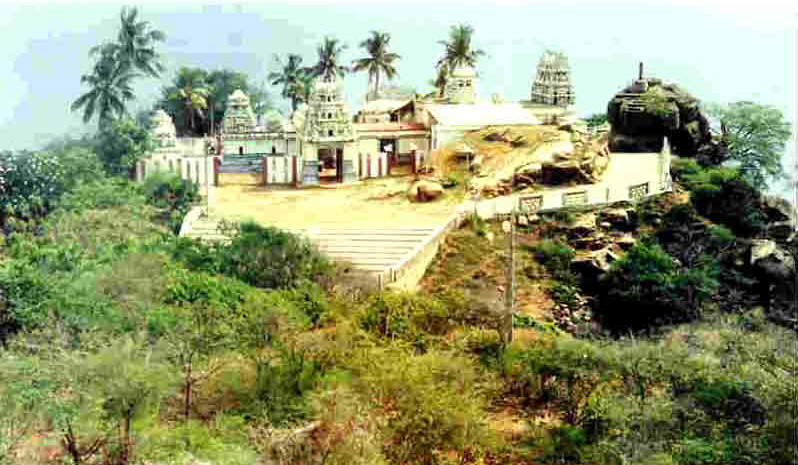
Universal condemnations pile up against the destruction of 1,500 year old Buddha statues in
Afghanistan. The 21st century world is different from that which existed 400 years ago when Portuguese generals
destroyed more than 500 temples in the island of Sri Lanka.
Thirukoneswaram was one of the temples demolished by the Portuguese. In an effort to
conquer and rule a nation, the invaders kill the leaders of the
conquered people and destroy their places of worship. Four hundred years ago, no nation in the world opposed this practice. However, history
suggests that the Tamils have preserved their heritage through many generations and have rebuilt
that which was destroyed. Thirukoneswaram, rebuilt in 1963, is an excellent example
and illustrates the resilience exhibited by our forefathers.
By 1624, the Portuguese destroyed many ancient temples in Eelam. Berndi Kovil, near Avissavela, in 1552, Muneswaram near Chillaw, in 1575, the Vishnu temple at Dondra, in 1588, Thirukatheeswaram, in 1589, and Nallur Kandasamy Kovin, in 1621, were destroyed. But
the Portuguese showed utmost indifference to Thirukoneswaram temple in Trincomalee (Thirukonamalai), until 1622. In 1622, Constantine de Sa de Menzes was alarmed at the possibility of rivals taking possession of the port in Trincomalee. He ruthlessly demolished the ancient temple of Thirukoneswaram, desirous of
amassing its wealth as booty, and to use the rubble to fortify the Trincomalee harbor.
It was New Years day of 1624 in Thirukoneswaram. The temple had one thousand pillars and, at that time, esteemed to be one of the richest temples in Southeast Asia. It had in its possession large amounts of gold, pearls, precious stones, and silk, which has been endowed over one thousand years.
Its origins are steeped in antiquity. Thirukonamalai is mentioned in ancient Hindu chronicles of Dekshana Kailasa Puranam, Ramayanam, Kanda Puranam. Accurate timing of these events has not been established. However, these chronicles appear to narrate events that took place approximately four to five thousand years before the birth of Christ.
The local tradition narrates in minute detail, the tragic events that took
place on the New Years day of 1624, which led to the destruction of Thirukoneswaram temple. In the morning, the temple was decorated and well lit with eleven oil lamps for the New Year's worship and pooja observances. After the pooja, the customary festival procession proceeded out to the town with a
crowd of worshippers.
At this time, Portuguese emissaries and soldiers gained entrance into the temple disguised as Hindu priests. They overpowered the few temple priests and workers who remained in the temple and looted the temple. All the possessions, treasured over a thousand years were carried away.
In the confusion, the few devotees, who escaped, carried away temple belongings they were able to take. These were the articles that were unearthed several years after in 1950 and now form part of the newly built Thirukoneswaram temple. The deities taken in procession were beyond the reach of the vandals
and were placed in safety at other temples.
Towards the evening, Portuguese Commander Constantine de Sa delivered an ultimatum to the temple priest. It said that everything valuable in the temple should be surrendered to him at dawn of the following day as he
will fire cannons from the ship at the Trincomalee sea and blast the temple down. The priest spent a night in misery. As usual, early in the morning, the temple attendant (pandaram) arrived by boat from Kottiyaram, bringing with him flowers, milk, and ghee for the days puja ceremonies. The priest confided
in the Pandaram about the ultimatum. Together, they hatched a plan to save the bronze statues of Konanayakar and Ambal Devi. They left the stone Siva Lingam inside the temple. The Pandaram took these statues and a few remaining pooja utensils (as they were the articles demanded by Portuguese) to Thambalakamam
lake for safety.
In the morning, the ultimatum expired and the Thirukoneswaram temple, worshipped by more than five hundred generations was blasted to destruction. The hill on which the temple stood was called
Swami Malai. There was no worship at Thirukonamalai for nearly 180 years, until 1803, and no temple for 377 years, until 1963.
The stones from the temple were used to build Fort Trincomalee for the protection of Portuguese rule. Eelam and this Fort changed hands to Dutch, in 1658, and
to the British, in1782.
The British, with religious tolerance, allowed worship at Swami Malai. A new generation of Hindus, who survived foreign domination and oppression began
to worship at Swami Malai.
It was Arumuga Navalar's clarion call of October 1872,
"[Ceylon] is lucky to have two Saiva temples of which laudatory hymns have been sung by our Saints. Saint Thirugnana Sambantha Moorthi Nayananar sang in praise of the Lord of Trincomalee, and both he and Sundaramurthi Swamigal has sung in praise of the Lord of Thiruketheeswaram,"
that was instrumental in creating an urge for rebuilding the ancient Hindu temples in Sri Lanka. A society of devotees
gathered by Arumuga Navalar completed the mission that he started.
The ancient statues made of gold and copper were found in 1944/1950. The initiation ceremony, Maha
Kumbebishekam, of the newly built Thirukoneswaram temple took place on April 3, 1963.
The rebuilding of Thirukoneswaram temple is a good illustration of Tamil resilience. Our forefathers preserved the memory of Thirukoneswaram through many generations and finally rebuilt a temple at the same place and installed the same statues.